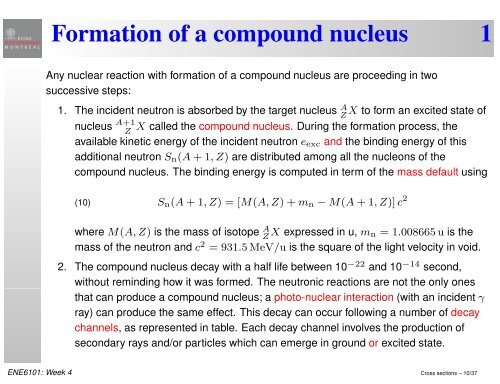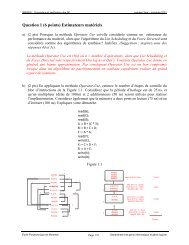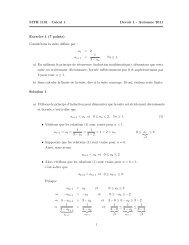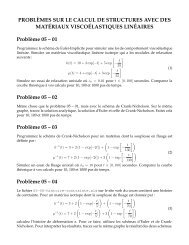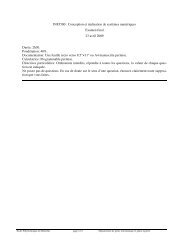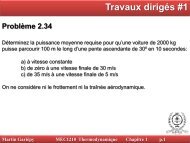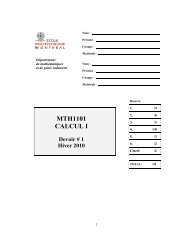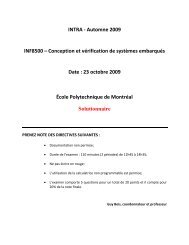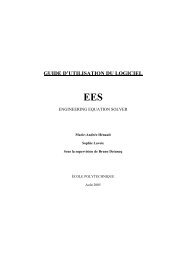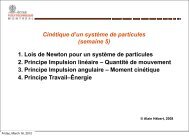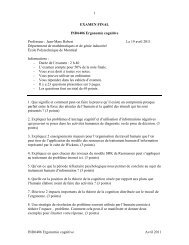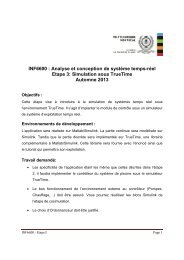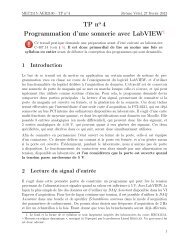Definition of cross sections 1 - Moodle
Definition of cross sections 1 - Moodle
Definition of cross sections 1 - Moodle
You also want an ePaper? Increase the reach of your titles
YUMPU automatically turns print PDFs into web optimized ePapers that Google loves.
Formation <strong>of</strong> a compound nucleus 1Any nuclear reaction with formation <strong>of</strong> a compound nucleus are proceeding in twosuccessive steps:1. The incident neutron is absorbed by the target nucleus A ZX to form an excited state <strong>of</strong>nucleus A+1ZX called the compound nucleus. During the formation process, theavailable kinetic energy <strong>of</strong> the incident neutron e exc and the binding energy <strong>of</strong> thisadditional neutron S n (A+1,Z) are distributed among all the nucleons <strong>of</strong> thecompound nucleus. The binding energy is computed in term <strong>of</strong> the mass default using(10)S n (A+1,Z) = [M(A,Z)+m n −M(A+1,Z)]c 2where M(A,Z) is the mass <strong>of</strong> isotope A Z X expressed in u, m n = 1.008665u is themass <strong>of</strong> the neutron and c 2 = 931.5MeV/u is the square <strong>of</strong> the light velocity in void.2. The compound nucleus decay with a half life between 10 −22 and 10 −14 second,without reminding how it was formed. The neutronic reactions are not the only onesthat can produce a compound nucleus; a photo-nuclear interaction (with an incident γray) can produce the same effect. This decay can occur following a number <strong>of</strong> decaychannels, as represented in table. Each decay channel involves the production <strong>of</strong>secondary rays and/or particles which can emerge in ground or excited state.ENE6101: Week 4 Cross <strong>sections</strong> – 10/37


